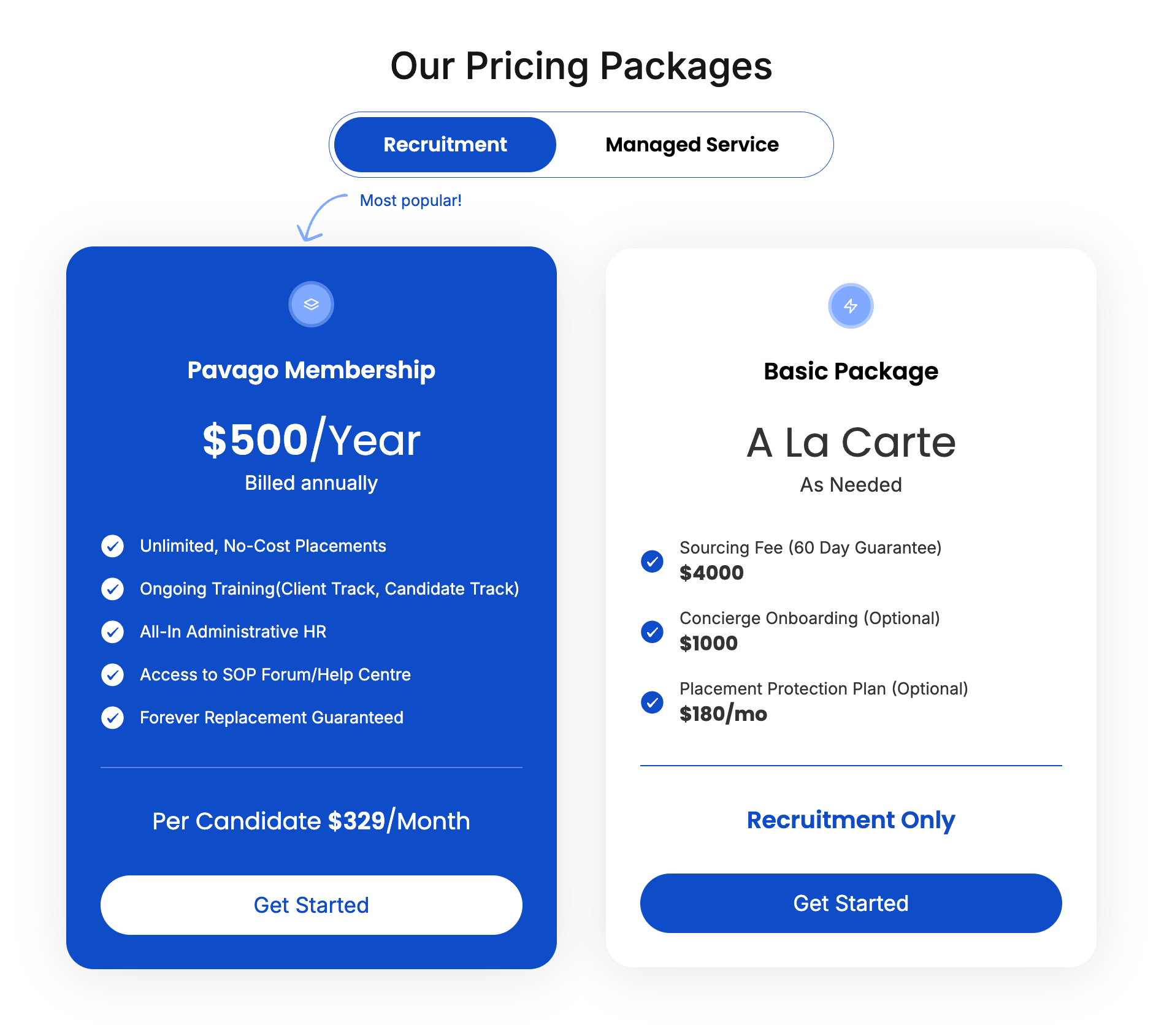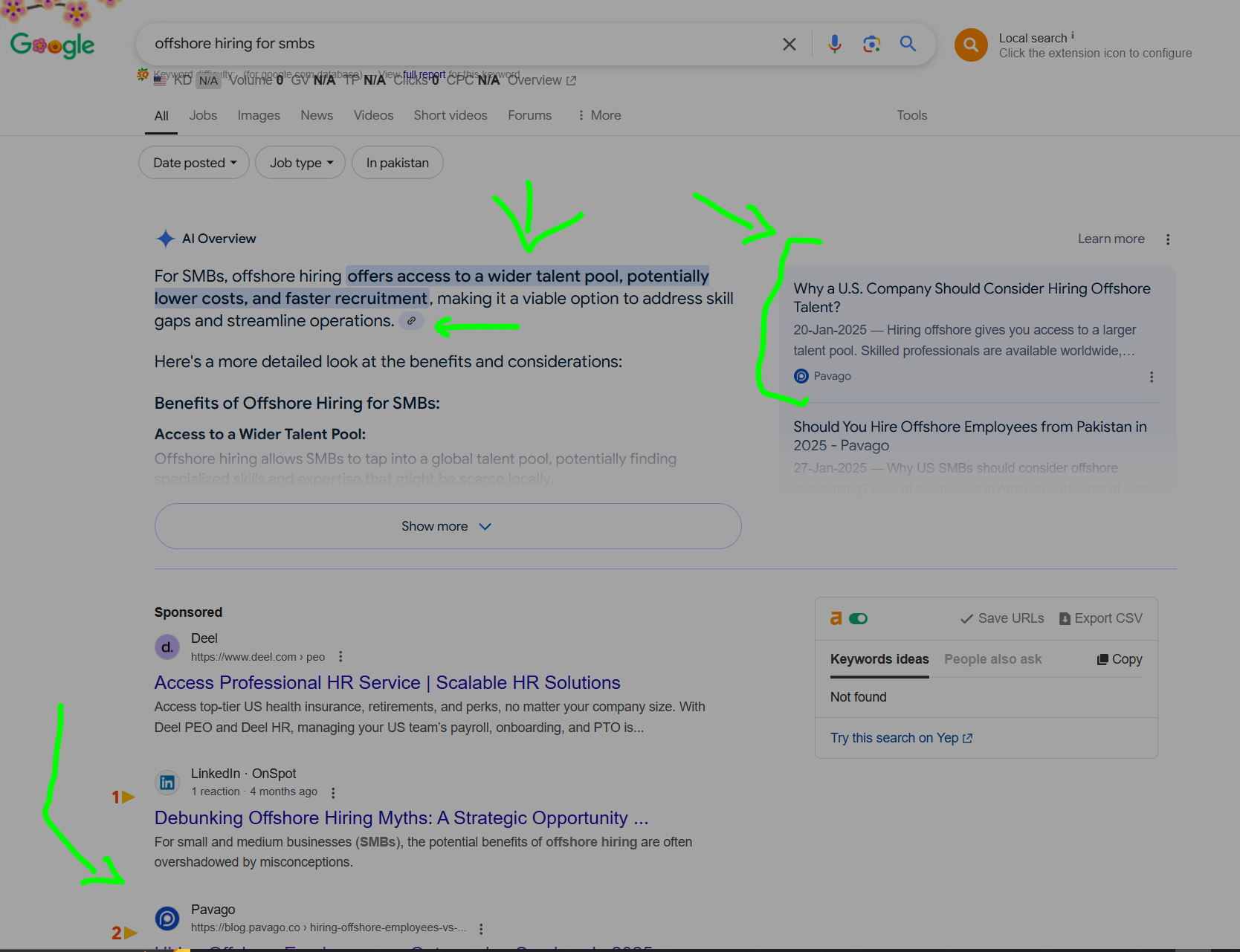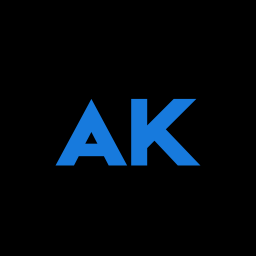From Inconsistent Revenue to $500 ARR - My First Year at Pavago.
The Starting Point
Pavago is an offshore recruitment company.
We help U.S. SMBs hire global talent for a fraction of the local cost.
When I joined, here’s what was true:
- We charged $4,000 per placement
- Most leads came from Parker’s Twitter account and cold calls
- Revenue looked good, but the growth model wasn’t built for scale
- And the upfront fee was quietly killing our conversions
Step One: Fix the Offer
The first thing I always do is research & listen to current leads - in this case demo calls.
Here's what i found - the personal connection from the CEO was doing a lot of heavy lifting. But over and over, I heard the same hesitation:
“We love the idea… but $4,000 upfront is hard to justify.”
Offshore hiring already feels uncertain to many SMBs.
An upfront fee made it feel riskier than it needed to be.
So we reworked the offer completely.
New Model:
- $500/year access
- $329/month per candidate
- Unlimited placements
- No sourcing fees
- Lifetime replacement guarantee

The logic was simple: Help SMBs & Make it easier to say yes
And it worked.
Early feedback was solid. Conversions picked up.
More importantly, we finally felt like we were serving the businesses we wanted to serve.
Step Two: Add Paid Marketing
Once the offer was converting, I pitched going beyond organic.
I wanted to test:
- LinkedIn Ads
- Twitter Ads
- Meta (Facebook/Instagram)
- Google Search
What happened:
- Twitter started strong, but quality was an issue. Even after optimizing, we saw too many invalid leads.
- Meta + Google showed some promise, but CPCs were too high early on. And the timeline to validate was long.
LinkedIn was different.
Right buyers. Right mindset. Right timing.
Started at $400 per SQL.
After creative + funnel optimization, we dropped it to sub-$90, with a 90% lead validity rate.
That became the core channel.

Step Three: Build Outbound the Right Way
Before I stepped in, outbound was mostly just cold calls.
No structure. No sequencing. Just volume.
I built a system that layered cold email with warm call follow-ups—
and added intent tools like RB2B to prioritize who we reached out to.
The new flow looked like this:
- Cold email first (to warm the lead)
- Enrichment and signal tracking via RB2B
- Follow-up call with context and timing
- More touches, less guessing
We weren’t just dialing blindly anymore.
We were starting conversations with relevance.
Without factoring in team overhead, our Cost per SQL came in around $50.
And some of our best customers came straight from this system.
Step Four: SEO with Intent
I wanted to do SEO differently.
Instead of writing AI-fluffed, keyword-stuffed content, we focused on bottom-of-funnel blogs that could actually convert.
Not “what is a VA?”
More like “how to hire a VA under $500/month that speaks fluent English.”
It was shaky at first.
Eventually, we layered in some TOF content to rank as well.
By the end of 2024, start of 2025, we started showing up in AI snippets—often above competitors. New Age SEO win, in my opinion.
I was less hand on my focus was on strategy, while the team I managed handled execution.

Step Five: Drop Friction, Drop CAC
In Q3 2024, our CAC hit ~$800. Not terrible. But we had a target of $500.
That’s when I decided to test something simple (with permission of course)
Remove the $500/year access fee as a limited-time offer.
Result?
- CAC dropped to ~$300
- Conversion rate improved
- Lead quality held steady
No magic. Just subtraction. Strategic win - did have some cash flow implication first few months, but it worked out good at the end.

Where We Are Now
In less than a year:
- SQL cost on LinkedIn dropped from $400 → <$150
- CAC dropped from $800 → $300
- Outbound function running and converting at ~$50/SQL
- BOF SEO content is driving results + AI visibility
- The business is closing in on $500K ARR
All while reducing dependency on the CEOs personal brand.
I didn’t just generate leads.
I built a system that could scale with—or without—the founder.

